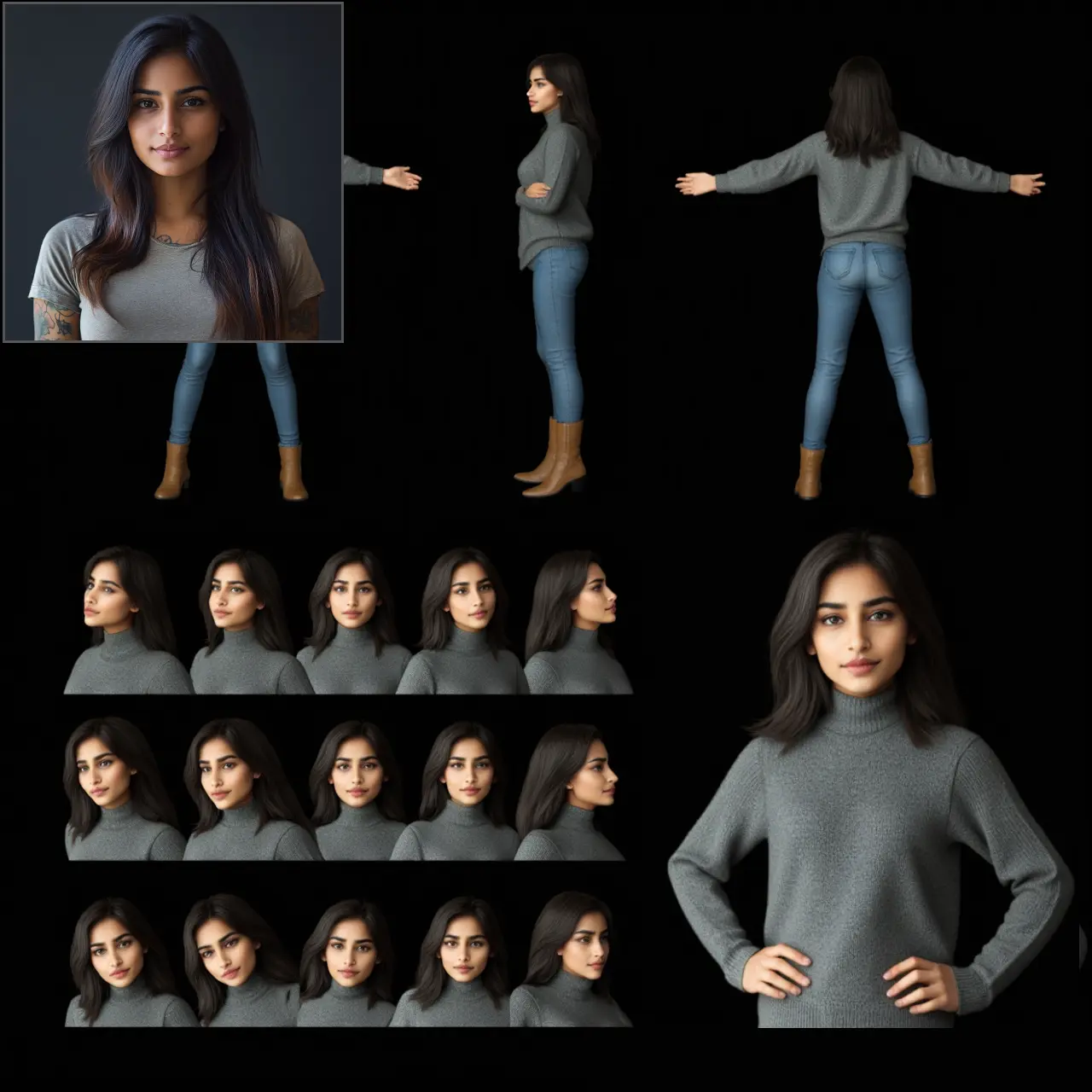ComfyUI Node: LayerUtility: LayerMaskTransform
LayerUtility: LayerMaskTransform
Category😺dzNodes/LayerUtility
chflame163 (Account age: 729days) Extension
ComfyUI Layer Style Latest Updated
2025-03-26 Github Stars
2.13K
How to Install ComfyUI Layer Style
Install this extension via the ComfyUI Manager by searching for ComfyUI Layer Style- 1. Click the Manager button in the main menu
- 2. Select Custom Nodes Manager button
- 3. Enter ComfyUI Layer Style in the search bar
Visit ComfyUI Online for ready-to-use ComfyUI environment
- Free trial available
- 16GB VRAM to 80GB VRAM GPU machines
- 400+ preloaded models/nodes
- Freedom to upload custom models/nodes
- 200+ ready-to-run workflows
- 100% private workspace with up to 200GB storage
- Dedicated Support
LayerUtility: LayerMaskTransform Description
Manipulate and transform mask layers for image processing tasks with scaling, rotating, mirroring capabilities.
LayerUtility: LayerMaskTransform:
The LayerUtility: LayerMaskTransform node is designed to manipulate and transform mask layers in various ways, providing you with a versatile tool for image processing tasks. This node allows you to apply transformations such as scaling, rotating, and mirroring to mask layers, which are essential for tasks like compositing, masking, and image editing. By using this node, you can precisely control the position, size, and orientation of mask layers, ensuring that they fit perfectly within your desired layout. The node also supports anti-aliasing and different transformation methods to maintain the quality of the masks during the transformation process. Overall, LayerUtility: LayerMaskTransform is a powerful utility for AI artists looking to enhance their image processing workflows with advanced mask manipulation capabilities.
LayerUtility: LayerMaskTransform Input Parameters:
mask
The mask parameter is the input mask layer that you want to transform. It is expected to be in the format of a tensor. This mask serves as the base layer upon which all transformations will be applied.
x
The x parameter specifies the horizontal offset for the mask transformation. It determines how much the mask will be shifted along the x-axis. The default value is 0, with a minimum of -99999 and a maximum of 99999, allowing for a wide range of horizontal adjustments.
y
The y parameter specifies the vertical offset for the mask transformation. It determines how much the mask will be shifted along the y-axis. The default value is 0, with a minimum of -99999 and a maximum of 99999, allowing for a wide range of vertical adjustments.
mirror
The mirror parameter allows you to apply a mirroring effect to the mask. You can choose from three options: None, horizontal, and vertical. This parameter is useful for creating symmetrical effects or flipping the mask along the specified axis.
scale
The scale parameter controls the scaling factor of the mask. It determines how much the mask will be resized. The default value is 1, with a minimum of 0.01 and a maximum of 100, providing flexibility in adjusting the mask size.
aspect_ratio
The aspect_ratio parameter adjusts the aspect ratio of the mask. It allows you to stretch or compress the mask along the vertical axis. The default value is 1, with a minimum of 0.01 and a maximum of 100, enabling precise control over the mask's proportions.
rotate
The rotate parameter specifies the rotation angle for the mask transformation. It determines how much the mask will be rotated in degrees. The default value is 0, with a minimum of -999999 and a maximum of 999999, allowing for full 360-degree rotation and beyond.
transform_method
The transform_method parameter defines the interpolation method used for scaling and rotating the mask. You can choose from several options: lanczos, bicubic, hamming, bilinear, box, and nearest. Each method offers different levels of quality and performance, allowing you to select the most suitable one for your needs.
anti_aliasing
The anti_aliasing parameter controls the level of anti-aliasing applied during the transformation process. It helps to smooth out the edges of the mask and reduce visual artifacts. The default value is 2, with a minimum of 0 and a maximum of 16, providing a range of anti-aliasing levels to choose from.
LayerUtility: LayerMaskTransform Output Parameters:
mask
The mask output parameter is the transformed mask layer resulting from the applied transformations. It is returned in the format of a tensor. This output mask can be used in subsequent image processing tasks or compositing operations, providing you with a modified version of the original mask that fits your desired specifications.
LayerUtility: LayerMaskTransform Usage Tips:
- To achieve precise alignment of mask layers, use the
xandyparameters to fine-tune the position of the mask. - Experiment with different
transform_methodoptions to find the best balance between quality and performance for your specific use case. - Utilize the
mirrorparameter to create symmetrical effects or to flip the mask for different visual perspectives. - Adjust the
scaleandaspect_ratioparameters to fit the mask within specific dimensions or to match the proportions of other elements in your composition. - Use the
rotateparameter to align the mask with other rotated elements or to create dynamic visual effects.
LayerUtility: LayerMaskTransform Common Errors and Solutions:
"Mask tensor dimension mismatch"
- Explanation: This error occurs when the input mask tensor does not have the expected dimensions.
- Solution: Ensure that the input mask tensor is either 2D or 3D. If it is 2D, it will be automatically unsqueezed to 3D.
"Invalid mirror mode"
- Explanation: This error occurs when an invalid value is provided for the
mirrorparameter. - Solution: Ensure that the
mirrorparameter is set to one of the following values:None,horizontal, orvertical.
"Scale value out of range"
- Explanation: This error occurs when the
scaleparameter is set to a value outside the allowed range. - Solution: Ensure that the
scaleparameter is set to a value between 0.01 and 100.
"Aspect ratio value out of range"
- Explanation: This error occurs when the
aspect_ratioparameter is set to a value outside the allowed range. - Solution: Ensure that the
aspect_ratioparameter is set to a value between 0.01 and 100.
"Rotation angle out of range"
- Explanation: This error occurs when the
rotateparameter is set to a value outside the allowed range. - Solution: Ensure that the
rotateparameter is set to a value between -999999 and 999999.
"Invalid transform method"
- Explanation: This error occurs when an invalid value is provided for the
transform_methodparameter. - Solution: Ensure that the
transform_methodparameter is set to one of the following values:lanczos,bicubic,hamming,bilinear,box, ornearest.
"Anti-aliasing value out of range"
- Explanation: This error occurs when the
anti_aliasingparameter is set to a value outside the allowed range. - Solution: Ensure that the
anti_aliasingparameter is set to a value between 0 and 16.
LayerUtility: LayerMaskTransform Related Nodes
RunComfy is the premier ComfyUI platform, offering ComfyUI online environment and services, along with ComfyUI workflows featuring stunning visuals. RunComfy also provides AI Models, enabling artists to harness the latest AI tools to create incredible art.


